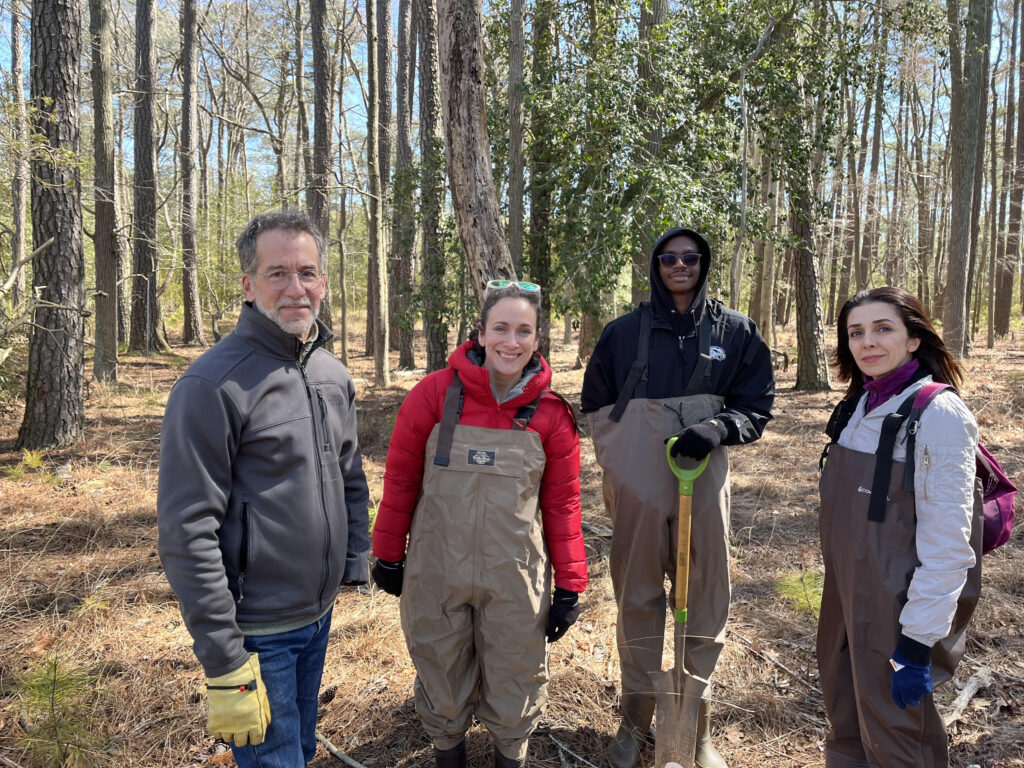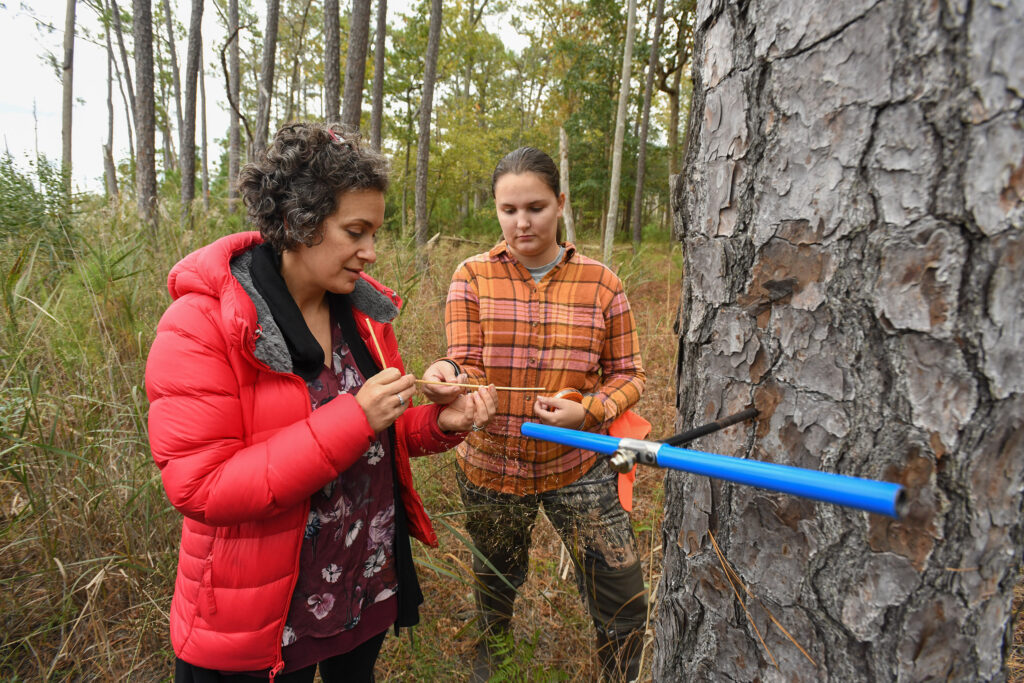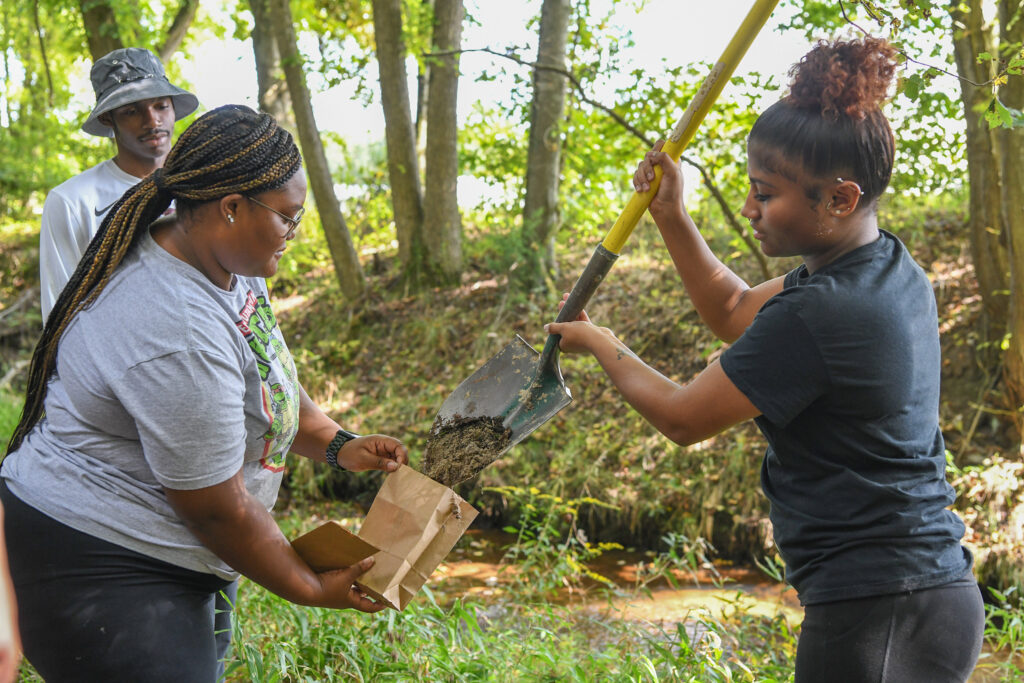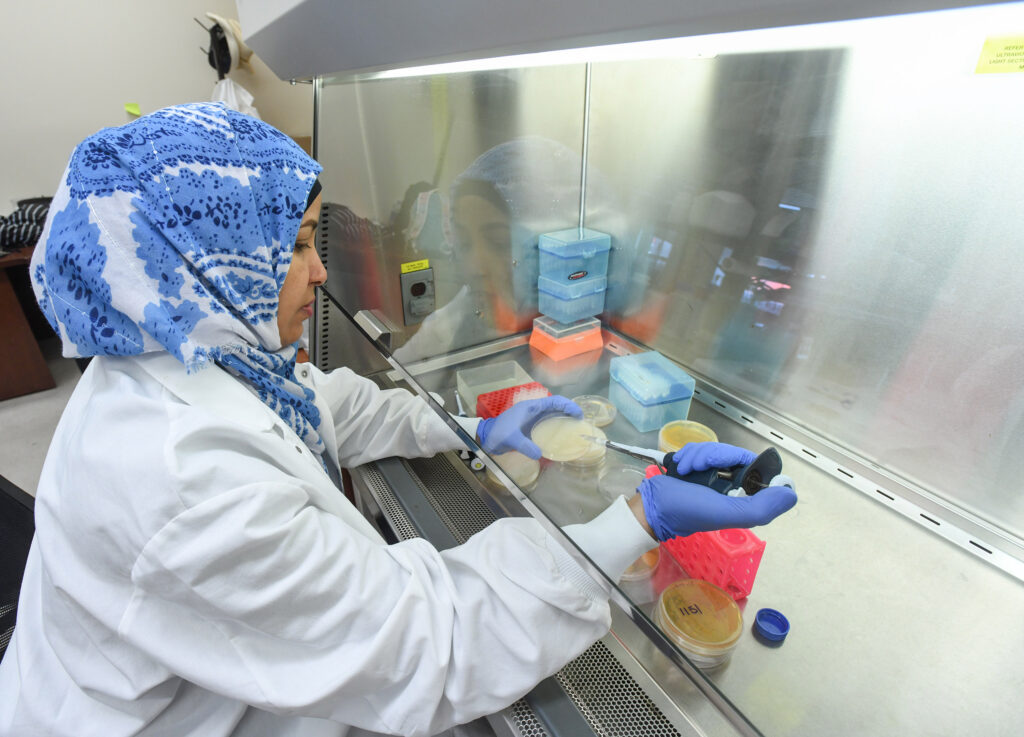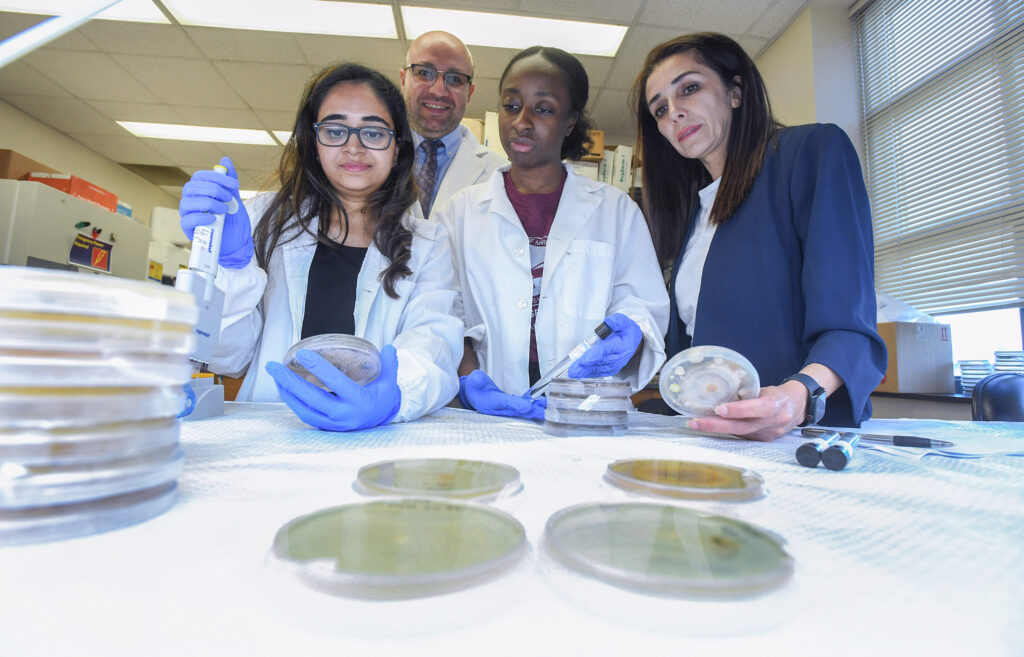
A team of researchers at the University of Maryland Eastern Shore are involved in a two-year project aimed at managing and protecting coastal areas of the Chesapeake Bay watershed for resilience to climate change. Low-lying and shallow areas in coastal forests are vulnerable to sea level rise and saltwater intrusion, resulting in soil salinization.
“This change in environmental conditions affects the soil microbial population that performs fundamental functions, such as nutrient cycling, breaking down residues and stimulating plant growth,” said project lead Behnam Khatabi, an associate professor and plant molecular pathologist at UMES.
Forests are critical to the health of the Chesapeake Bay, Khatabi said, but sea level rise is altering the region’s forests, killing trees and damaging the crucial ecosystem processes forests perform. This leaves behind ghost forests leading to coastal erosion and further saltwater intrusion.
“Soil microbial communities and their biological processes play a critical role in maintaining soil health and productivity, which in turn, influence sustainability of ecosystems and mitigate the effects of climate change,” he said.
The multidisciplinary group is collecting and studying soil in the Monie Bay in western (between Deal Island and Mt. Vernon) Somerset County to add to the knowledge of the role of microbial communities in maintaining and improving soil health, and their response to salinizing conditions in coastal forests. The site is a component of the Chesapeake Bay National Estuarine Research Reserve managed by the Maryland Department of Natural Resources. Funding for the project is through the National Science Foundation’s Critical Zone program.
The UMES project is complementary to the NSF Coastal Critical Zone study at the University of Delaware with Stephanie Stotts, an associate professor in UMES’ departments of Natural Sciences and Agriculture, Food and Resource Sciences, serving as a co-project director and liaison between the two studies. UMES students working with her can be found in the ghost forest’s marshy low lands and in higher forested areas nearby taking tree measurements and core samples to compare.
“Dr. Khatabi’s project fills gaps in our understanding of system function,” Stotts said. “The critical zone research group, studying the processes and feedback associated with inland marsh migration driven by sea level rise and the creation of ghost forests, found itself asking questions about the microbial system, but lacked the expertise to answer these questions.”
Khatabi with the involvement of undergraduate students and research scientist and soil molecular biologist, Dr. Mozhgan Sepehri, are taking soil samples at the research site and analyzing them in the lab for an in-depth look at how host plants adapt to environmental stresses. Sepehri, he said, is generating extensive microbial genomic data that will serve as key resources to “identify habitat-specific microbial interaction strategies that impact plant fitness.”
“Our ultimate goal is to apply beneficial microorganisms as a natural way to help plants defend themselves and cope with hostile environmental stresses like saltwater intrusion,” Sepehri said.
“Findings from both projects can be used to better predict and subsequently plan for the future in order to better manage our forest and coastal ecosystems,” Stotts said. Left unchecked, the implications of saltwater intrusion are far-reaching, she said, impacting loss of fields for farming, reduction in commercially important loblolly pine, and helping to mitigate climate change as forests play a central role in absorbing and storing carbon dioxide—one of the main drivers of climate change.
“One of the keys to restoring the Chesapeake Bay is building coastal forest resiliency in a salinizing environment through cooperative grant-funded research,” said Jonathan Cumming, professor and chair of UMES’ Department of Natural Sciences and a co-director on Khatabi’s research project. “No program is completely successful without the active participation of students. The NSF grant provides assistantships for undergraduates along with the research scientist. Engaging minority students in intensive experiential learning with interdisciplinary research is life-changing and creates pathways to science professions.”
This project is supported by the Critical Zone program in the Division of Earth Sciences and the Historically Black Colleges and Universities Undergraduate Program in the Human Resources Division. NSF ORE-CZ grant #2229056.
Above: UMES biology seniors, from left, Shivani Patel and Rhune Liverpool study the bacterial community in the Chesapeake Bay as part of a NSF-funded research project in the molecular plant pathology lab with Drs. Behnam Khatabi and Mozhgan Sepehri (far right). Undergraduates learn standard lab procedures related to isolation and culturing bacteria and fungi, genomic DNA isolation, sequencing library construction and DNA sequencing.
Below, clockwise:
UMES researchers in the Monie Bay ghost forest, from left, are: Jonathan Cumming, Stephanie Stotts, UMES forestry major Charles Smith and Mozhgan Sepehri.
Dr. Stephanie Stotts, an associate professor in UMES’ departments of Natural Sciences and Agriculture, Food and Resource Sciences, evaluates core samples taken from trees in the Monie Bay ghost forest with Samantha Jalkowski, a master’s student in the Marine, Estuarine and Environmental Sciences Program.
Daylah McCullough, left, and Nina Clovis collect soil samples to analyze for salinity and microbial properties.
Sulafa Ali, a senior biology major at UMES, works with bacterial samples in the molecular plant pathology lab.
The ghost forest in the Monie Bay, part of the Chesapeake Bay National Estuarine Research Reserve.
Gail Stephens, agricultural communications, University of Maryland Eastern Shore, School of Agricultural and Natural Sciences, UMES Extension, gcstephens@umes.edu, 410-621-3850.
Photos by Todd Dudek, agricultural communications, University of Maryland Eastern Shore, School of Agricultural and Natural Sciences, UMES Extension, tdudek@umes.edu.

